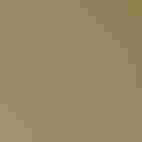Gray Flycatcher
At a Glance
The high desert of the Great Basin is the summer stronghold of this pale little bird. The Gray Flycatcher nests in sagebrush country and in open woods of juniper and pinyon pine, in drier territory than most of its relatives. It also regularly winters farther north than any other Empidonax flycatcher: it is common in winter in the mesquite thickets and streamside groves of southern Arizona.
All bird guide text and rangemaps adapted from Lives of North American Birds by Kenn Kaufman© 1996, used by permission of Houghton Mifflin Harcourt Publishing Company. All rights reserved.
Category
Perching Birds, Tyrant Flycatchers
IUCN Status
Least Concern
Habitat
Arroyos and Canyons, Desert and Arid Habitats, Forests and Woodlands, Shrublands, Savannas, and Thickets
Region
California, Northwest, Rocky Mountains, Southwest, Texas
Behavior
Flitter, Hovering
Population
2.900.000
Range & Identification
Migration & Range Maps
Migrates shorter distance than most Empidonax flycatchers. Moves rather early in both spring and fall, with some arrivals on breeding range in April and on wintering range in August. Probably migrates at night.
Description
5 1/2" (14 cm). Paler than other Empidonax flycatchers, with relatively long tail and bill. Best mark is behavior: instead of flipping tail up like other Empids, it dips its tail downward gently, like a phoebe.
Size
About the size of a Sparrow
Color
Brown, Gray, White
Wing Shape
Rounded
Tail Shape
Notched, Square-tipped
Songs and Calls
Song is in 2 parts, rising in tone: chiwip (or chi-bit) cheep. Call is a soft whit.
Call Pattern
Flat, Undulating
Call Type
Chirp/Chip
Habitat
Sagebrush; also pinyon and juniper. In winter, willows, brush. Breeds in open and rather arid habitats, especially sagebrush plains with a few taller trees or shrubs, also scrubby woods of juniper and pinyon pine. Winters in mesquite groves and in streamside willows and other trees, in lowlands.
Sign up for Audubon's newsletter to learn more about birds like the Gray Flycatcher
Behavior
Eggs
3-4. Creamy white. Incubation is probably by female only, about 14 days.
Young
Both parents bring food for nestlings. Young leave nest and make first flights about 16 days after hatching.
Feeding Behavior
Forages by watching for insects from an exposed perch, then flying out to catch them in bill. Typically perches low, and often flies down to ground for insects; also catches many insects in mid-air, and takes some from foliage and twigs while hovering.
Diet
Insects. Diet not known in detail, but reported to feed only on insects, including beetles, wasps, moths, grasshoppers, and others.
Nesting
May sometimes nest in loose colonies in good habitat. In places, this species and Dusky Flycatcher overlap in nesting habitat, and they will defend territories against each other. Nest site is typically in vertical crotch of sagebrush or on horizontal branch of juniper or pinyon pine, 3-20' above the ground. Nest (built mostly by female, perhaps sometimes with help from male) is a deep cup, rather bulky and loosely constructed. Made of weeds, strips of bark, grasses, twigs; lined with plant down, fine bark fibers, animal fur, feathers. Nest is usually in dense part of plant and is not conspicuous.
Conservation
Conservation Status
Still widespread and fairly common.
Climate Threats Facing the Gray Flycatcher
Choose a temperature scenario below to see which threats will affect this species as warming increases. The same climate change-driven threats that put birds at risk will affect other wildlife and people, too.



